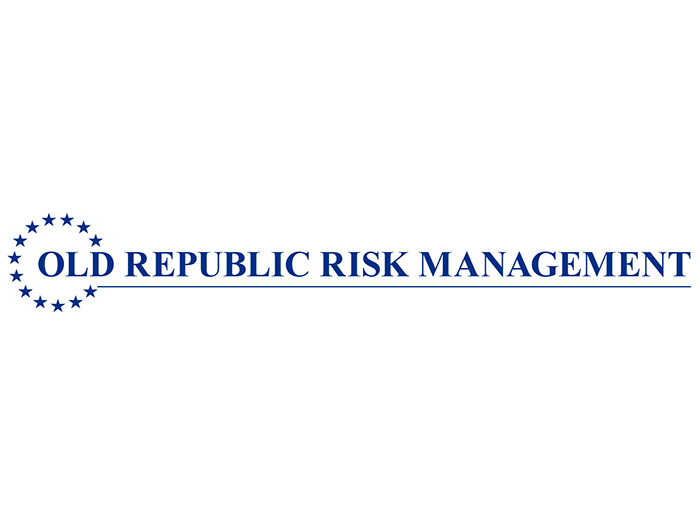Mastering the Changes: Ways for Risk Professionals to Get a Handle on the Impacts of Continued Labor and Material Shortages

The surge started in the spring of 2020 and hasn’t let up.
Driven by a variety of factors, including labor shortages and supply chain challenges, labor and materials costs have advanced rapidly. According to a study by research firm Marshall & Swift/Boeckh, it’s estimated that 75% of business properties in the U.S. are underinsured by 40%.
“There’s this dynamic that’s been happening since April 2020, and it’s not one event, it’s not one material, it’s not one element of labor, it’s collective, and it’s all happening at the same time,” said Rob Sullivan, Real Estate Industry Practice Lead at The Hartford.
“It’s not just domestically, it’s also on an international basis, that has gotten us to where we are today,” Sullivan continued. “There’s always been some fluctuation, inflationary factors. But what we’re looking at is a compounding effect, the dynamic of how rapidly everything changed. And the magnitude at which things changed is unprecedented.”
“Looking at the different components involved in construction, whether it’s roofing, plumbing, etc., they’re all increasing,” added Austin Koch, a Property Portfolio Manager with The Hartford. “Additionally, there’s a recent increase in the cost of fuel to bring products from point A to point B. In past years fuel prices saw peaks and valleys.”
It’s not only materials and labor costs that are affecting property valuations. Many businesses are scurrying to modify their properties to address the changes in workforce patterns wrought by the pandemic.
How organizations now think about office space, whether they are repositioning or repurposing office space into a hybrid model and collaborative or less collaborative environments, is also playing into how properties are evaluated and insured, Sullivan said.
Underinsurance Risk
This rapid and relentless increase in costs and changing market needs is adding up to a real risk that many properties will be underinsured. That makes the importance of conducting more frequent, more accurate property valuations even more pressing, according to Koch and Sullivan.

Austin Koch, Property Portfolio Manager, The Hartford
“Obviously, if somebody is underinsured and they incur a major loss, there is a financial component that is very important to stress to our customers,” Sullivan said.
“There’s a financial aspect that you’re not just paying your deductible, but if you’re severely underinsured and you have a major loss, you could be facing additional dollars, out-of-pocket expenses that could put a dent in your profit margins or you may not even be able to rebuild, if it’s extreme enough,” he added.
Koch relates the story of a business looking to remodel and build out, including plumbing, to enhance its customer experience.
“The business received a quote for the work last year but didn’t have the financials at the time to move forward. They looked at it again this year and it was 150% more expensive. It’s a shock that is very real for our customers,” Koch said.
Which brings us to the importance of conducting accurate and timely property valuations. Some businesses might have traditionally been in the habit of valuating their properties for insurance purposes every two to three years. That approach would not be advisable these days, given how fast business conditions are changing.
“Historically, valuations have been a talk track for underwriting, but we need to bring the frequency of reviewing valuations to the forefront,” said Koch. “If you’re conducting valuations on a three-year basis, you’re not keeping up fast enough.”
“Change and expense increases are happening rapidly, so it is important to ask yourself ‘are our values still adequate for this property?’ when planning an addition, renovation, or modification,” he continued.
Valuation Best Practices
So how can risk managers partner with their brokers and insurance carrier to make sure they are assessing their properties at the right rate of frequency and coming up with the right values?
There are several key points to take into consideration, Sullivan and Koch said.
“It’s important for insureds to have a really good relationship with their agent and broker,” Koch said. “They need to look at valuation and assess the tools that are available.”
“At The Hartford, we have robust tools at our fingertips to help with the valuation process. They include: an in-house risk engineering team, property specialists that look at trends — they stay on top of it, in turn, benefiting the insured’s overall valuation and coverage,” he said.
These tools also include “a claims organization from a loss estimate perspective, and a risk engineering organization that goes on-site and can provide insights on valuations,” he continued.
As Koch mentioned earlier, valuations every three years is not enough. The frequency of conducting them might have to increase in this environment, Sullivan added.
Additionally, the frequency of conversations between brokers, insureds and vendors to make sure inflationary factors are being taken into account should increase. Where once labor and materials costs were going up by single digits annually, now double-digit increases are being seen. Those conversations happen quarterly in many cases and sometimes monthly.
Risk managers who aren’t used to annual or even semi-annual property valuations might doubt that they or their risk managers have the tools to conduct valuations economically and efficiently, but automation is changing that equation, according to Koch.
“Data and technology continue to get better, and The Hartford is no exception to that,” Koch said.
“We’ve had a lot of investment in our tools and applications. There is a speed improvement in that, and automation is something that we’ve really been pushing on.”
Once a data baseline is established and labor and material cost increases are taken into account, automation allows insureds and their underwriting partners to get a better grip on valuation changes much faster. Not every carrier is at the same point in their use of technology, Koch cautioned.
“It’s going to depend on the insured, it’s going to depend on the agent or broker and where they are within their data technology journey,” he said.
Looking Ahead
Just as the factors impacting property valuations in the past 18 to 20 months have not been static, so too is the reality that changing labor, materials and commercial real estate market needs will impact the importance of accurate property valuations going forward.
“Being prepared for the future is critical,” Koch said.

Rob Sullivan, Real Estate Industry Practice Lead, The Hartford
“Our historic tendencies of how we’ve looked at insurance and valuation are changing. As we continue to look to the future, there are habits and routines that mean we’re going to be working out that valuation muscle maybe more frequently than we used to.”
Just look at lumber futures as one data point, Sullivan said. For a while in mid-2021, it looked like they had peaked. But in the fourth quarter of 2021, lumber futures were pointing upward again.
The frequency and transparency of communications between insured, insurers, and their broker partners and vendors will remain of paramount importance, Sullivan said.
“We owe it to our customers to do our best and continue to have these conversations with our distribution partners,” Sullivan said.
“We need to be proactive about education and risk management practices. Our top priority is to be there for our customers,” Sullivan said.
“How do we do that? It’s through relationships. It’s through data. The Hartford leverages data every day throughout the organization,” Sullivan said. &










